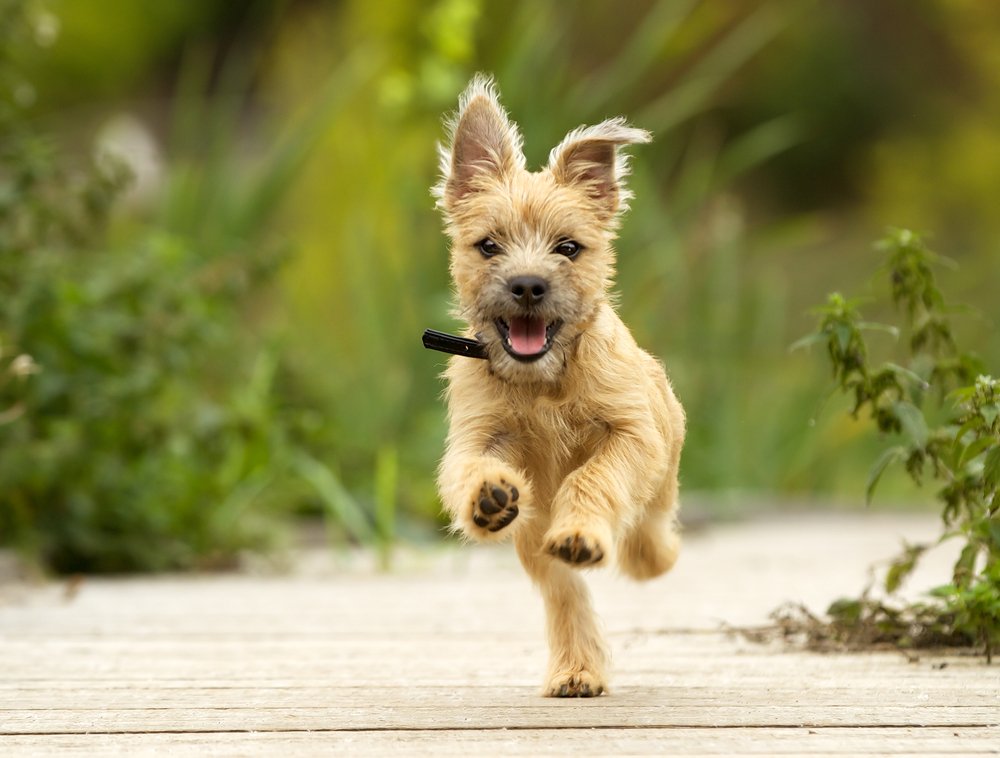Help your dog be happy and healthy through enrichment activities
Dogs need regular mental and physical stimulation to be at their best. Enriching your dog’s life with a range of tailored activities means less boredom, stress and anxiety. They’ll also learn how to have fun on their own which can help alleviate separation anxiety issues. This all translates to better behaviour and a longer, healthier life.
A good enrichment activity should encourage movement and mimic behaviours your dog would need in the wild to satisfy their physical and mental needs, such as fetching and foraging.
An enrichment activity should not cause stress or anxiety. If your dog seems disinterested, hesitant or afraid, then the activity is not enhancing their wellbeing. Observe your dog carefully and come up with ideas that stimulate them and feed their need to do and explore.
Keep in mind your dog’s personality, age, health status and strengths when choosing things to do.
Make sure you switch it up, keep it fresh, and tailor it to your dog’s unique personality. Every dog will respond differently. Here’s some ideas to get you started.
Social enrichment
Ideally, a well-socialised dog will not be skittish, over-stimulated or aggressive around new people, dogs, places or things.
Hook your dog up with other dogs for a supervised play session if their temperament is suited to it. Not all dogs enjoy mixing with others outside their family.
Take them on walks where they can have positive interaction with other dogs and people through play, pats, rewards and fun.
The occasional session in doggy daycare could be worth a try if your dog has an outgoing nature.
Nutritional enrichment
Give your dog the opportunity to use natural foraging and feeding behaviours to earn food.
Foraging activities may decrease unwanted behaviours like excessive barking. Your dog is also getting physical exercise before they eat.
Try different types of puzzle feeders to challenge them. Hide food and encourage them to look for it as a game. Mix up the variety of food and treats to keep it new and interesting.
Sensory enrichment
Stimulating your dog’s senses (sight, sound and smell) can have a calming effect, potentially reducing barking and helping them settle. Stimulate their senses in a variety of ways that suit their individual nature.
Dogs that enjoy scents might like to play ‘find the treat’. Other dogs that thrive on visual stimulation may prefer chasing a frisbee. Most dogs will be happy going on walks where they have time to sniff new smells and investigate their environment.
For an older, cruisier dog, a comfortable bed by a window where they can see what’s happening outside might be enough.
Physical enrichment
Some dogs need more action than others to feel satiated. Your dog might thrive on an agility course, find pure joy jumping into water to swim for a ball, or they might just prefer an energetic game of fetch.
Start out with things your dog likes, then slowly push into more challenging activities. See how far your dog can comfortably extend their natural abilities.
Practice positive training together. Teach them to ‘sit’, ‘shake’, ‘lie down’ or do tricks for a reward such as pats or a healthy treat.
Occupational enrichment
Give your dog a ‘job’ that encourages them to move and think. The mental stimulation will combat boredom and provide an outlet for excess energy.
In particular, breeds like Border Collies, Kelpies or Shepherds are much happier when they have ‘work’ to do. Fly ball, fetch, agility courses and obedience training are all great ways to make your energetic dog feel like they are ‘working’.
Hunting breeds, like Jack Russells, Retrievers or Spaniels, might enjoy a ‘hunting’ game in the back yard using scented items.
Give your dog a food puzzle that requires them to think, persist and ‘work’ for their treat.
DIY enrichment toys
You don’t have to blow a hole in your budget to keep your pooch challenged and engaged. Your house is full of useful items that can be repurposed for enrichment activities.
Boxes are great for hiding treats.
A muffin tray, an egg carton, or the rim of an upturned metal bowl make a good puzzle feeder.
Old food containers can hold scented things for hide and seek.
Make a snuffle box using a big cardboard box, scrunched up newspaper and toilet rolls, and hide treats in it.
Fill a kids’ plastic shell pool with sand, water, tennis/plastic balls or cardboard recycling (clean milk cartons, boxes) to make a play pit. Rotate the contents. Hide treats among the balls or recycling.
Chairs and furniture make for an excellent agility course.
Blocks of ice with treats or toys frozen in them are an awesome summer time waster.
Just make sure that all your items are non-toxic and aren’t likely to disintegrate or be accidentally digested.
Remember to keep it interesting and make changes so your dog doesn’t get bored. Divide all your activities into a few groups and rotate them every 2-3 days.
Have fun exploring enrichment activities with your pup and don’t forget that Google is loaded with great ideas to keep you both on your toes!

